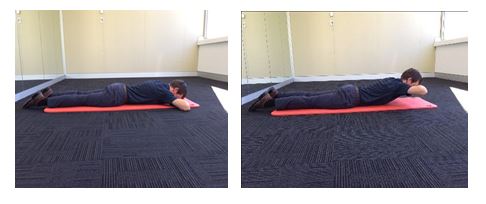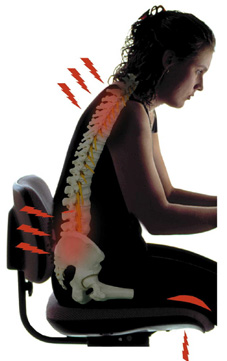The 6 Best Pilates Exercises for Your Upper Body
 Making Pilates exercises part of your regular routine can help you fix any posture related issues. If you have no idea what Pilates is, check out our other article “Pilates Reformer: Your Most Burning Questions Answered“. These articles discuss the benefits of Pilates exercises more in depth.
Making Pilates exercises part of your regular routine can help you fix any posture related issues. If you have no idea what Pilates is, check out our other article “Pilates Reformer: Your Most Burning Questions Answered“. These articles discuss the benefits of Pilates exercises more in depth.
To put it simply, Pilates is a physical training activity that uses resistance equipment or body weight activities which focuses on core and gluteal strength, spinal alignment, balance, coordination, posture and flexibility.
Why Pilates Exercises?
Pilates and Pilates exercises are very well known for their tremendous effects on core strength and lower back pain – just google it and see the extensive results! Pilates exercises offer a large number of benefits to your upper body and shoulder function as well.
At Sport and Spinal Physio we treat a lot of desk workers that spend majority of their day hunched over their desk; Pilates offers the ability to counteract this position with a few simple exercises.
Pilates Matwork Exercises for Lower Back Pain
Studies into Pilates for lower back pain are extensive, but recently research into the benefits of Pilates for chronic neck and shoulder pain has developed. Poor posture and shoulder biomechanics can be linked to this pain (1, 2) – and this is where Pilates fits in!
Studies have found significant improvements in seated posture, both statically and during shoulder movements, as well as increased activity in posture-correcting upper spine muscles (1, 2). Furthermore, it was also found to increase shoulder range of motion for women recovering from treatment after breast cancer (3).
The 6 Best Pilates Exercises (Matwork)
1. Breaststroke Prep
 Starting Position:
Starting Position:
Lay flat on your stomach with your legs long. Bend your elbows and place your hands at the level of your forehead with palms facing downwards towards the mat.
Movement:
Tilt your hips forwards into the mat. Inhale to prepare. As you exhale, focus on lengthening through your upper back and neck whilst lightly drawing your shoulder blades together as you slowly lift your head 10cm off the mat. Hold yourself in this position for 5-10 seconds before slowly lowering yourself down.
Repetitions: 3 x 10
Frequency: 1-2 times per day
2. Swimming
Starting Position:
Lay flat on your stomach with your arms and legs long.
Movement:
Tilt your hips forwards into the mat to engage your core. Inhale to prepare. As you exhale, lift your chest and arms off the mat while you also lift your legs off the mat. Keep your gaze down towards the mat. Left opposite arm and leg a further 5-10cm off the mat and then alternate sides. Focus on keeping your breath even and regular.
Repetitions: 3 x 30 seconds
Frequency: 1-2 times per day
3. Kneeling Superman
Starting Position:
Kneeling on all fours with your hands directly under your shoulders and your knees directly under your hips.
Movement:
Engage your core by lightly drawing your belly button to your spine and ensure that your hips stay facing the ground. Slowly slide your right leg out along to mat and extend until your foot is in line with your glute. At the same time extend your left arm in front of your body while drawing your shoulder blade in and down towards your opposite jean pocket. Return to kneeling and repeat on the alternate side.
Repetitions: 3 x 10
Frequency: 1-2 times per day
The 6 Best Pilates Exercises (Reformer)
4. Back Rowing – Plough
Starting Position:
Sitting on the Reformer either cross-legged, long-legged or straddle facing the straps. Hold on to the straps and relax through your shoulders.
Movement:
Pull on the tension of the straps until your arms are parallel or just past your body. Focus on drawing your shoulder blades together and down as well as keeping your elbow as straight as possible throughout the movement.
Repetitions: 3 x 10
Frequency: 1-2 times per day
*NB: at a lighter resistance increase reps to 3 x 15. At a lower resistance decrease your reps to 3 x 8.
5. Front Rowing – Offering
Starting Position:
Sitting on the Reformer either cross-legged, long-legged or straddle facing away from the straps. Hold on to the straps with your palms facing towards the ceiling and relax through your shoulders.
Movement:
While keeping your palms facing the ceiling push on the tension of the straps as you straighten your arms out in front of your body as far as you can. Focus on relaxing through your neck as you separate your shoulder blades as far as possible. Keep your arms and elbows as close to your body as possible as you return to the starting position, controlling the movement backwards.
Repetitions: 3 x 10
Frequency: 1-2 times per day
*NB: at a lighter resistance increase reps to 3 x 15. At a lower resistance decrease your reps to 3 x 8.
6. Internal and External Rotation
Starting Position: Sitting on the side of the reformer with your legs hanging over the edge. Ensure that your flush against the shoulder pads.
Movement:
External Rotation: hold onto the strap with the arm furthest away. Keep your elbow tucked in at your side at a 90 degree bend. Rotate your arm out to the side without twisting your body or leaning to the side. Control the movement so you return to the starting position.
Internal Rotation: hold onto the strap around the metal clasp with the arm closest to the strap. Keep your elbow tucked in at your side at a 90 degree bend. Rotate your arm towards your body without twisting your trunk. Control the movement back so you return to the starting position.
Repetitions: 3 x 10
Frequency: 1-2 times per day
*NB: at a lighter resistance increase reps to 3 x 15. At a lower resistance decrease your reps to 3 x 8.
Conclusion
Many of these exercises can be progressed or regressed depending on your fitness levels! It is recommended that you consult a qualified Pilates instructor if you suffer from any injuries or postural weaknesses.
At Sport and Spinal Physiotherapy we run many Matwork and Reformer Classes – just gives us a call on 6262 4464 or speak to your physiotherapist and we can run over all the ins and outs. The benefit of doing Pilates with a qualified Physiotherapist, who is also qualified to teach Pilates, is the personal exercise program that is individually tailored to you.
(2) Cruz-Ferreira, A., Fernandes, J., Kuo, Y. L., Bernardo, L. M., Fernandes, O., Laranjo, L., & Silva, A. (2013). Does Pilates-based exercise improve postural alignment in adult women?. Women & health, 53(6), 597-611.
(3) Keays, K. S., Harris, S. R., Lucyshyn, J. M., & MacIntyre, D. L. (2008). Effects of Pilates exercises on shoulder range of motion, pain, mood, and upper-extremity function in women living with breast cancer: a pilot study. Physical Therapy, 88(4), 494-510.






